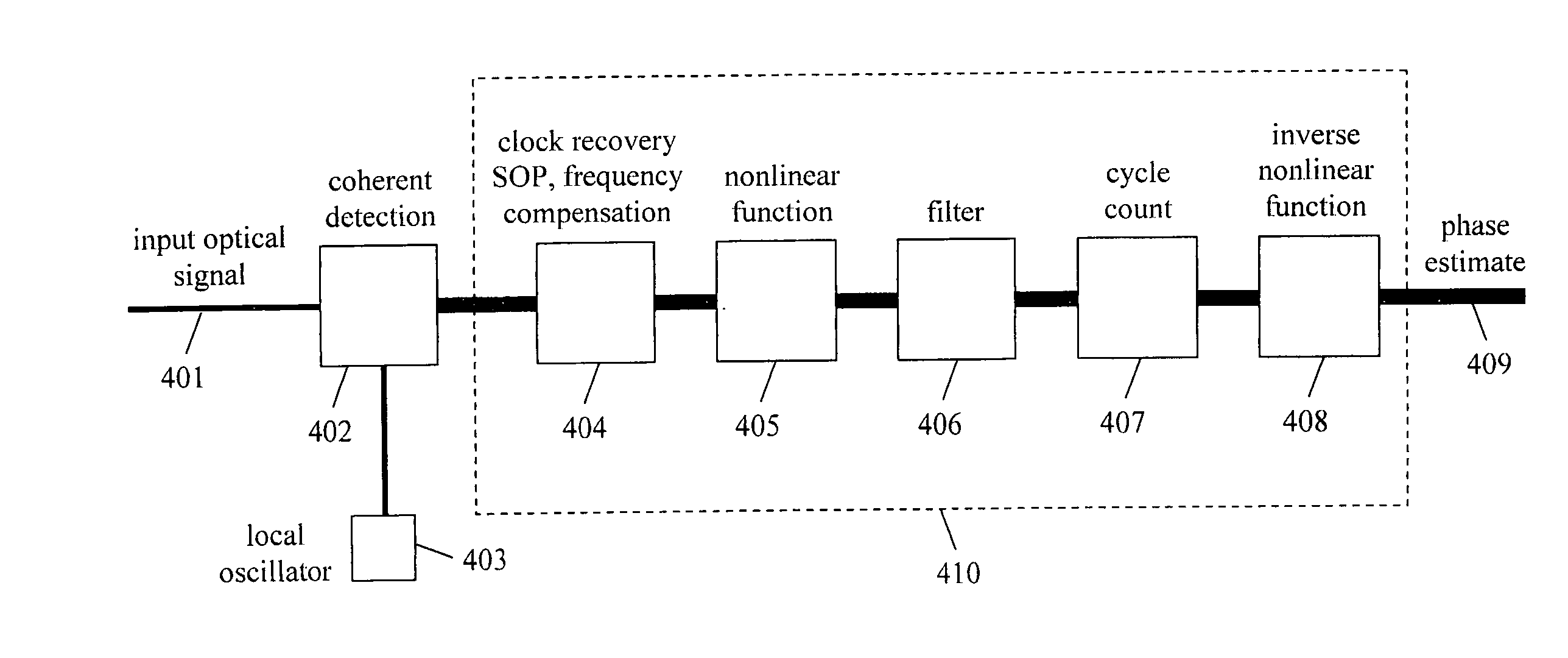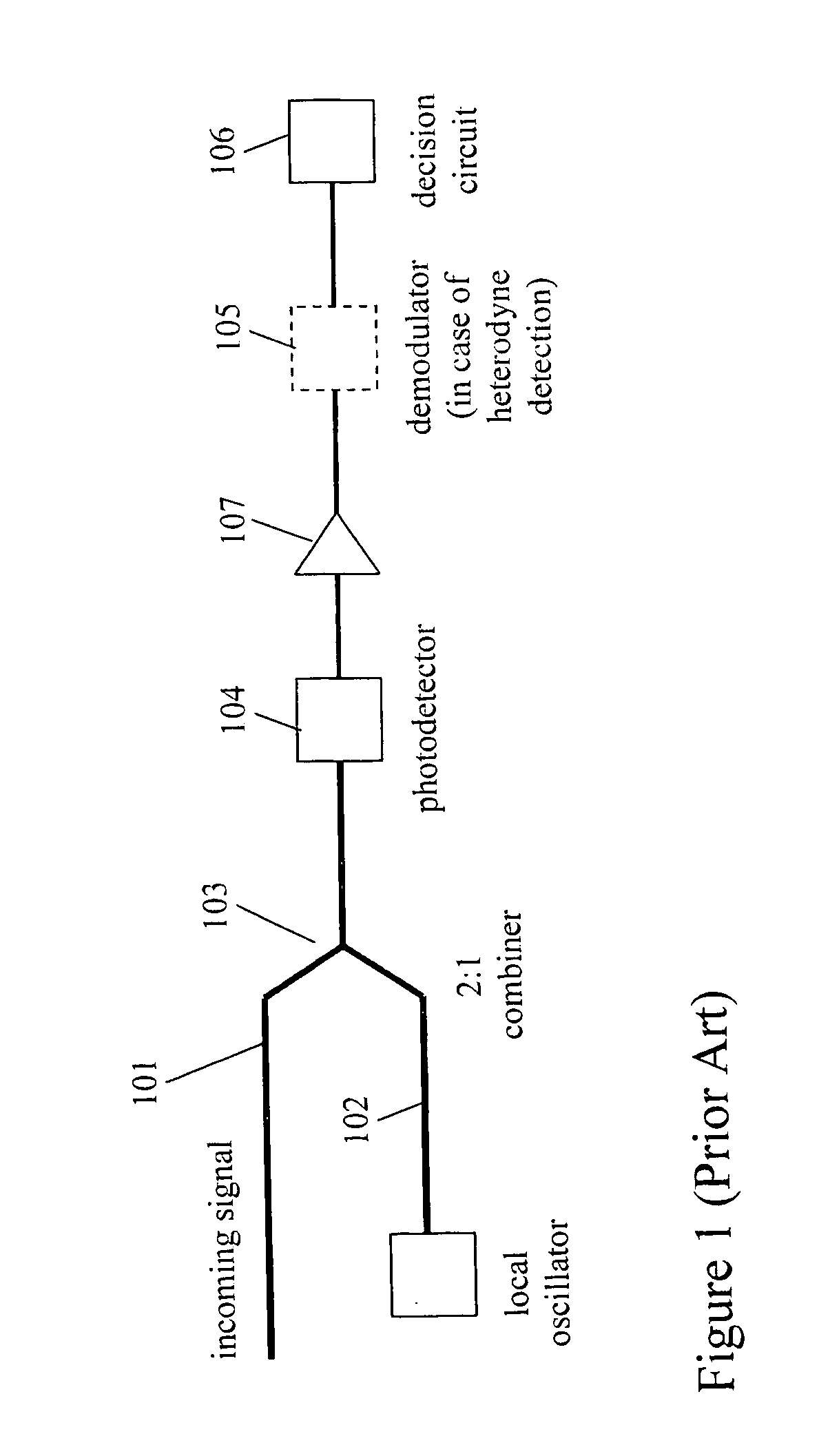Phase estimation for coherent optical detection
a phase estimation and optical detection technology, applied in electromagnetic transmission, electrical equipment, transmission, etc., can solve the problems of difficult implementation, increased bit error rate, and errors in received digital data
- Summary
- Abstract
- Description
- Claims
- Application Information
AI Technical Summary
Benefits of technology
Problems solved by technology
Method used
Image
Examples
Embodiment Construction
[0044] The present invention is a phase estimation method that can be implemented in a parallel digital signal processor architecture, and which does not use feedback from recent results. There are many modulation formats used to transmit digital information on subcarriers. The methods used to estimate the phase may differ in the details, but have a common basic approach, as is discussed in “Digital communication receivers: synchronization, channel estimation & signal processing” by H. Meyr et al. and “Synchronization techniques for digital receivers” by U. Mengali & A. N. D'Andrea. The method to estimate the phase of an Mary PSK signal will be described below. It will be apparent to those skilled in the art that the present invention for making phase estimates may be utilized for other modulation formats, such as offset QPSK or QAM.
[0045]FIG. 4 illustrates the phase estimation process in the preferred embodiment of the present invention. The optical signal 401 is input to a sample...
PUM
 Login to View More
Login to View More Abstract
Description
Claims
Application Information
 Login to View More
Login to View More - R&D
- Intellectual Property
- Life Sciences
- Materials
- Tech Scout
- Unparalleled Data Quality
- Higher Quality Content
- 60% Fewer Hallucinations
Browse by: Latest US Patents, China's latest patents, Technical Efficacy Thesaurus, Application Domain, Technology Topic, Popular Technical Reports.
© 2025 PatSnap. All rights reserved.Legal|Privacy policy|Modern Slavery Act Transparency Statement|Sitemap|About US| Contact US: help@patsnap.com



